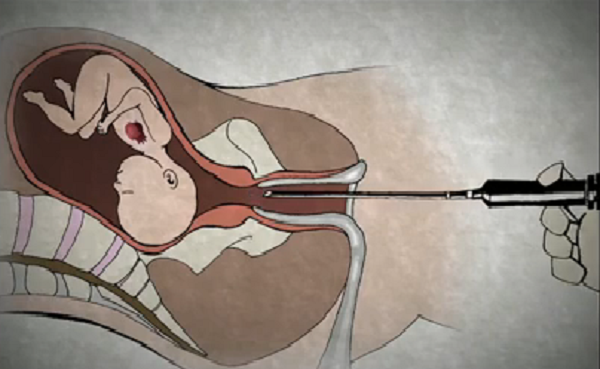Charles Dickens could appreciate the strange circumstances that preborn infants survive these days, as technology and innovation create the best of times and the worst of times for those who have not yet been born. Case in point, the daughter of Bethan Simpson and her husband Kieron who at 24 weeks (6 months) in the womb, was operated on for spina bifida, a condition in which a baby’s spinal column does not fully close during development. Earlier this month, the infant was removed from her mother’s womb for the procedure and then returned to continue growing.
The miracle of her continued existence (both in and out of the womb) stands in sharp contrast to some of her peers, other children who face a deadly needle in late-term abortions at the same age as she was, so that an increasingly viable child does not survive an abortion. Heart-attack abortions, caused by exposing a baby to potassium chloride or digoxin to induce cardiac arrest, are common in later term abortion, despite the fact that the infant may suffer horribly, as scientific literature indicates babies feel pain at 5 months (20 weeks) into pregnancy. Even the abortion industry think tank, the Guttmacher Institute notes that in the womb, infants recoil from stimuli and that anesthesia is given for fetal surgery to protect the preborn.
Why cause a heart attack in a preborn baby? Because causing that kind of death takes away the complication of a live birth (for abortionists). Killing babies born during an abortion led to the imprisonment of Kermit Gosnell, who was convicted of ending preterm infants with scissors, among other crimes against humanity. The reality of living babies being born during abortions led the legal struggle in Gonzalez v. Carhart in which the abortion lobby fought to be able to deliver a baby in a breech position to then stab the child in the neck while still partially in the mother’s birth canal.
Writing for the majority, Justice Anthony Kennedy noted in his opinion that in opposing the horrors of partial-birth abortion Congress found “there was a moral, medical, and ethical consensus that partial-birth abortion is a gruesome and inhumane procedure that is never medically necessary and should be prohibited.” The Supreme Court agreed that the horrifying means to an end in late-term abortion could be banned.
Such a consensus should be extended to heart-attack abortions, as increasingly viable infants endure chemically induced trauma to be expelled, dead, after induced delivery in two to four days. Congress should also act to prevent these deadly heart-attack abortions now, especially as a national debate is taking place about late-term abortion.
REACH PRO-LIFE PEOPLE WORLDWIDE! Advertise with LifeNews to reach hundreds of thousands of pro-life readers every week. Contact us today.
The public does not support the abortion radicalism we are witnessing today, such as when the Gov. Ralph Northam, D-Va., calmly discussed allowing a baby born during an abortion to die. In a recent poll of millennials, Students for Life of America’s Institute for Pro-Life Advancement found that only 7 percent favored the abortion policy of the Democratic Party platform of legalized abortion through all 9 months, for any reason whatsoever, and with taxpayer funding.
Currently, eight states allow abortion through all 9 months of pregnancy, up to the moments before birth, and other states like Vermont and Rhode Island are contemplating allowing virtual infanticide as well.
While the public opposes abortion on viable babies later in pregnancy, these are not as uncommon as you may think. Even using the math of the abortion industry think tank the Guttmacher Institute, more than 12,000 infants are aborted late in pregnancy, and almost none of them take place for medical necessity.
In light of the push for late-term abortion today, the public need to be informed of the ways in which abortionists are ending preborn and viable life, something that will lead to difficult conversations.
Also in the Gonzales decision, Kennedy wrote:
“In a decision so fraught with emotional consequence, some doctors may prefer not to disclose precise details of the abortion procedure to be used. It is, however, precisely this lack of information that is of legitimate concern to the State … The State’s interest in respect for life is advanced by the dialogue that better informs the political and legal systems, the medical profession, expectant mothers, and society as a whole of the consequences that follow from a decision to elect a late-term abortion.”
Recently on Fox News, three abortion survivors shared their stories, talking about how they have coped with physical issues resulting for the tools used against them in the womb. Melissa Ohden, Josiah Presley, and Claire Culwell talked passionately about the beauty and value of their lives – to them and to their families today. As Culwell said:
“We know that a baby is what is inside a mother’s womb based on medical technology and science. We just hope that because people can see our faces and see that we are people. We are human. We do grow up to be someone someday, that people will realize that those women do not speak for women like me. That’s why I would ask those people, ‘Where were my rights as a woman? What were my rights in the womb?'”
These are good questions we all need to answer.








